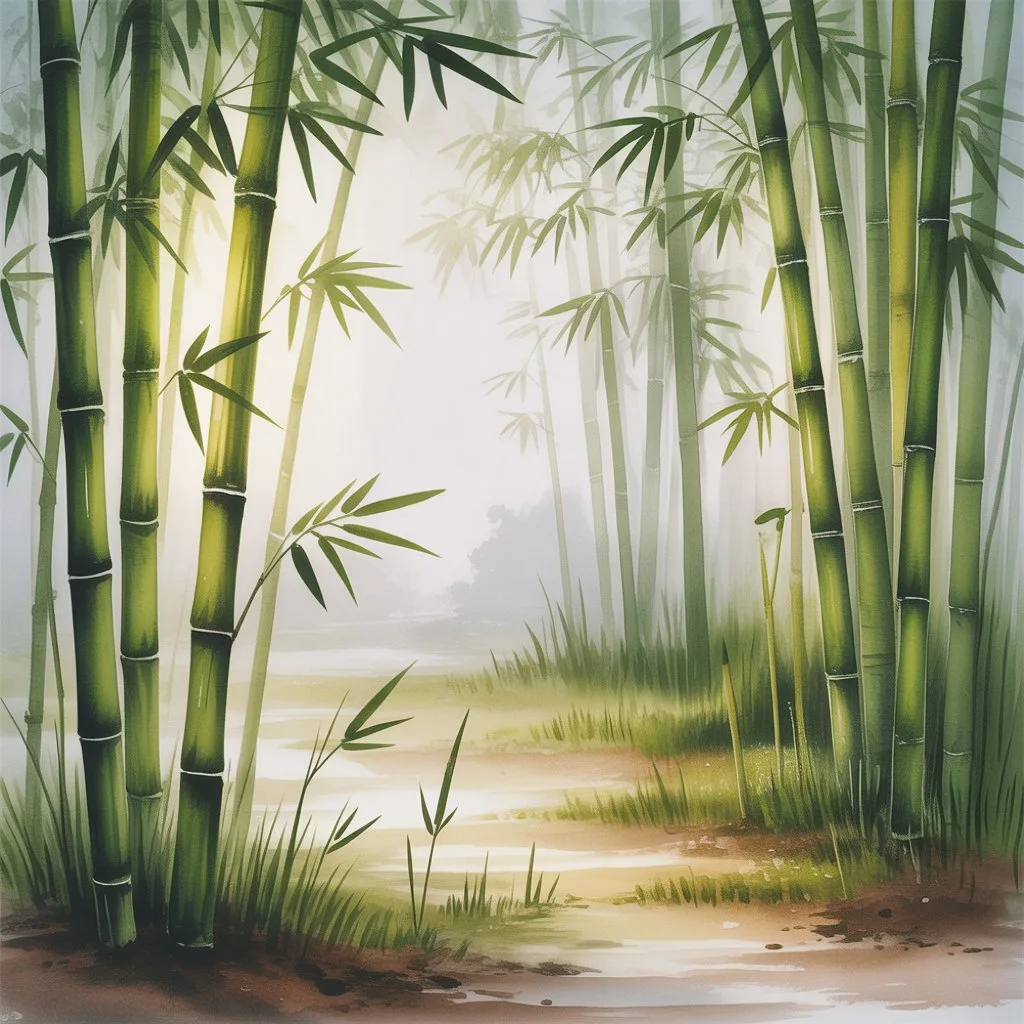Bamboo has long been regarded as more than just a plant — it’s a living symbol of resilience, balance, and renewal across countless cultures. From ancient Asian philosophies to modern sustainability movements, bamboo embodies harmony between humanity and nature. Its flexibility in strong winds, its rapid growth, and its ability to regenerate make it a perfect representation of strength through adaptability.

The Deep Roots of Bamboo in Culture
Bamboo’s symbolic importance dates back thousands of years, particularly in countries like China, Japan, and India. In Chinese culture, bamboo is one of the “Four Gentlemen” alongside plum blossoms, orchids, and chrysanthemums — plants that represent noble virtues. Bamboo stands for integrity and modesty, valued qualities in Confucian philosophy. Because it bends but does not break, it symbolizes endurance and inner strength.
In Japanese tradition, bamboo represents purity and protection. It is often planted near Shinto shrines as a spiritual barrier to ward off evil spirits. In India, bamboo carries meanings of friendship and good fortune, often used in rituals celebrating life and growth. Around the world, its symbolism continues to evolve, bridging ancient wisdom with modern interpretations of sustainability and harmony.
The Symbolism of Flexibility and Strength
One of the reasons bamboo resonates so deeply in cultural symbolism is its natural ability to bend without breaking. This unique property mirrors the human capacity to stay resilient in the face of adversity. The saying “Be like bamboo — bend but don’t break” reminds us that strength does not always come from rigidity, but from adaptability.
The plant’s hollow structure also holds philosophical meaning. It represents humility and openness, teaching that emptiness can be a source of potential — just as an empty vessel can hold new ideas or knowledge. Many spiritual practices use bamboo as a metaphor for inner balance and mental clarity, emphasizing simplicity and mindfulness.
Bamboo in Art, Literature, and Architecture
Across cultures, bamboo has inspired artists, poets, and builders for centuries. In Chinese calligraphy and ink painting, bamboo is one of the most frequently depicted plants, symbolizing elegance and scholarly virtue. Its simple form provides endless creative inspiration, encouraging artists to capture strength within softness.
In Japanese poetry, bamboo groves often appear as peaceful settings that represent solitude and reflection. The gentle rustle of bamboo leaves in the wind has even been likened to whispered wisdom from nature.
Architecturally, bamboo’s symbolism finds tangible expression. It’s not just admired — it’s used. Entire homes, temples, and bridges have been built from bamboo, embodying harmony between human creation and the natural environment. Its presence in design blends aesthetic beauty with ecological consciousness, reinforcing the idea that sustainable living and cultural heritage can coexist.
Bamboo as a Modern Symbol of Sustainability
In the modern world, bamboo’s symbolism has expanded to include eco-conscious growth and renewal. As one of the fastest-growing plants on Earth, bamboo can be harvested sustainably without depleting natural resources. Its deep root systems prevent soil erosion, and it releases more oxygen than many tree species, making it a green ally in combating climate change.
This ecological resilience aligns perfectly with its traditional meaning of harmony. Bamboo teaches that true growth comes from coexisting with nature, not dominating it. Today, it stands as a global emblem for sustainable progress, bridging the gap between ancient traditions and modern environmental values.
From bamboo toothbrushes to flooring and fabrics, its versatile applications remind us that innovation and nature can thrive together. Using bamboo in daily life can serve as a practical way to live more mindfully while connecting with the plant’s deeper symbolism of renewal and balance.
Bamboo in Celebrations and Everyday Life
Bamboo’s cultural influence extends into festivals, home décor, and even music. In many Asian cultures, bamboo flutes are played during ceremonies to create calming, harmonious sounds that symbolize unity between humans and nature. Bamboo poles are used in celebrations like the Tanabata Festival in Japan, where people write wishes on colorful paper and hang them from the stalks.
Even in modern homes, bamboo is associated with positive energy. In Feng Shui, it represents prosperity, peace, and growth. A small bamboo plant placed in the home or office is believed to attract harmony and success — a living reminder of balance and renewal.
The use of bamboo in everyday life shows how cultural symbols can remain relevant across generations. Whether as art, music, architecture, or simple home décor, it continues to express values of connection, peace, and natural growth.
Lessons from Bamboo for Daily Living
The symbolism of bamboo carries meaningful lessons that apply far beyond culture or geography. Its steady growth and strength in flexibility remind us to stay calm under pressure, adapt to challenges, and embrace simplicity. Just as bamboo grows straight and tall, reaching for light while remaining rooted, people can strive for progress without losing their values.
Bamboo also teaches patience — despite its fast growth, it takes time for its roots to establish before shooting upward. This parallels personal development: true growth often happens unseen, beneath the surface, before results become visible.
In times of stress or change, reflecting on the symbolism of bamboo can offer perspective. It encourages balance — the kind that harmonizes ambition with peace, effort with grace, and strength with humility.
A Living Emblem of Harmony and Growth
From its role in ancient art to its presence in sustainable innovation, bamboo continues to stand as a global symbol of harmony and growth. Its story connects humanity with nature, tradition with modernity, and resilience with renewal.
Embracing the symbolism of bamboo can inspire a more mindful and sustainable way of living — one that values flexibility, balance, and respect for the natural world. The next time you see a grove of bamboo swaying gracefully in the breeze, remember the quiet lesson it offers: harmony is strength, and growth begins with balance.

Elena Mora is a creative educator and eco-craft enthusiast who specializes in bamboo musical instruments and sustainable toys for children. She believes that hands-on learning through play teaches kids about creativity, music, and environmental responsibility.



